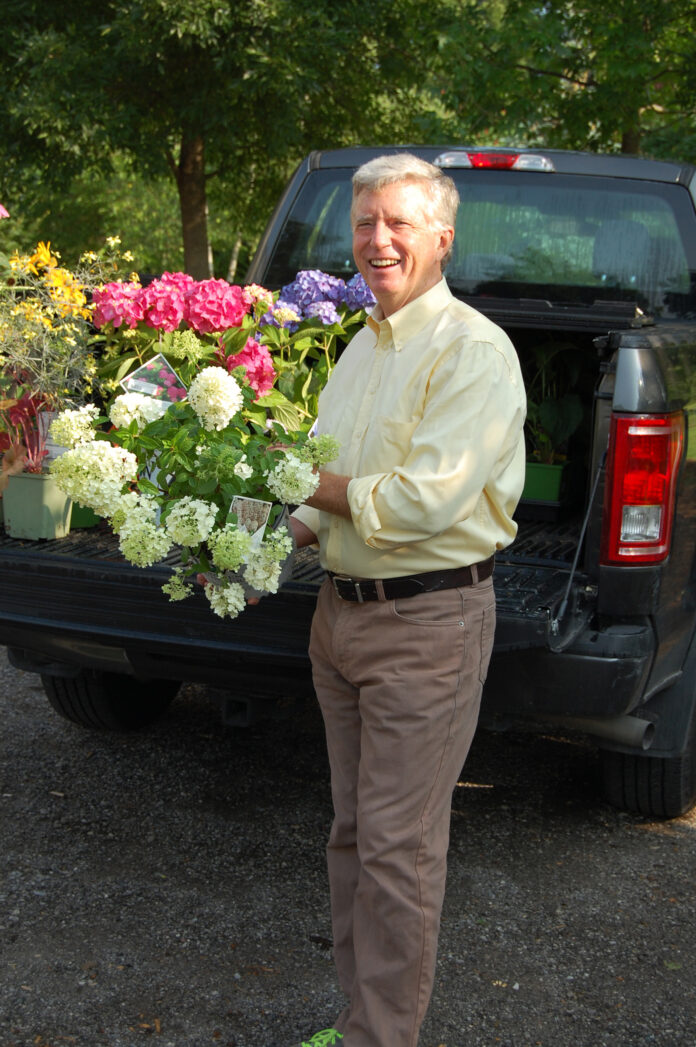Time was, only a few years ago, the most reliable source of colour in the garden were impatiens. Many readers will recall drifts of the things, in vibrant Baskin Robins colours everywhere, from city lots, parks and containerized on cottage docks.
Impatiens created an addiction to reliable blooms that had not been matched before or since. Then downy mildew entered the picture and bam, impatiens collapsed across the continent.
Plant hybridizers have been racing to find a mildew-resistant strain of impatience and are said to be close, but in the meantime, our predilection for colour has moved to the winter hardy, plant-once-and-done ever expanding family of hydrangeas.
Here is our primer for the uninitiated.
In the current issue of the Sheridan Nurseries guide, considered to be the ‘bible’ of nursery catalogues, there are no less than 44 varieties of hydrangea listed. There are five families or species of hydrangea widely available, each with unique characteristics.
Arborescens. Native (originally, before they were hybridized) sometimes called smooth hydrangea, which includes the historically popular Annabelle, globe shaped flowering shrubs. Winter hardy on the prairies, these plants mature to about a metre and a half high and round. They bloom in July throughout the summer, especially the new varieties. Our favourite is Incrediball. The flower is about the size of your head. Easy to grow but they require sun for at least 6 hours a day. Prune in spring by at least a third. Annabelle performs best when cut down to within 6 centimetres of the ground, otherwise they get top heavy in a rain and fall over.
Macrophylla. Native to Japan, you may know these plants by their commercial name, Endless Summer, which were introduced about a generation ago. This family of hydrangea include the popular lacecap flowering varieties. Our favourite is the new Summer Crush Endless Summer which can blue or red depending on the acidity of the soil (acid soil = blue, alkaline = red). This variety blooms on old and new wood, so it is hard to get pruning wrong.
Serrata. Native to Japan, hardy to zone 5 (south of Barrie). Serrata hydrangeas require little pruning as they bloom on old wood. Most varieties feature blue or pink blossoms, depending on soil acidity.
Quercifolia. This less winter hardy family features the popular oakleaf hydrangeas. We have not had a lot of luck with it in our zone 5 gardens but they thrive in gardens in Toronto and along Lake Ontario. There are some wonderful specimens of quercifolia at the Royal Botanical Gardens where they are frequently used as the feature plant in a large perennial bed. Native to the Carolinian forest here in Ontario. Prune just after blossoms finish.
Paniculata. Native to Japan and China, this family features the popular Limelight hydrangea, a reliable perennial flowering plant that grows up to three metres high and wide if not controlled. This family is named for their panicle, or lilac shaped flowers. All paniculate varieties lend them selves to pruning and we recommend a light pruning each spring. Also worth a look is Pinky Winky (who comes up with these names?) with mammoth two-toned blossoms up to 50 cm long (pink base on white panicles). Most panicle varieties feature white or cream flowers mid to late summer and early fall.
All hydrangeas are relatively disease and insect free, some more winter hardy than others (check your favourite varieties against your growing zone) and all of them lend themselves to cut and bring the blossoms indoors. To dry them for permanent use indoors place the cut flower stem in 2 cm of water and allow the water to evaporate. As the stem and flower slowly dry the flowerets will remain in place, though the vibrance of the original colour will fade a bit.
In truth, there is no substitute for impatiens and when the new, disease resistant varieties are widely available and proven performers, we will let you know. In the meantime, hydrangeas are stars in most any garden.
Mark Cullen is an expert gardener, author, broadcaster, tree advocate and Member of the Order of Canada. His son Ben is a fourth-generation urban gardener and graduate of University of Guelph and Dalhousie University in Halifax. Follow them at markcullen.com, @markcullengardening, and on Facebook.


